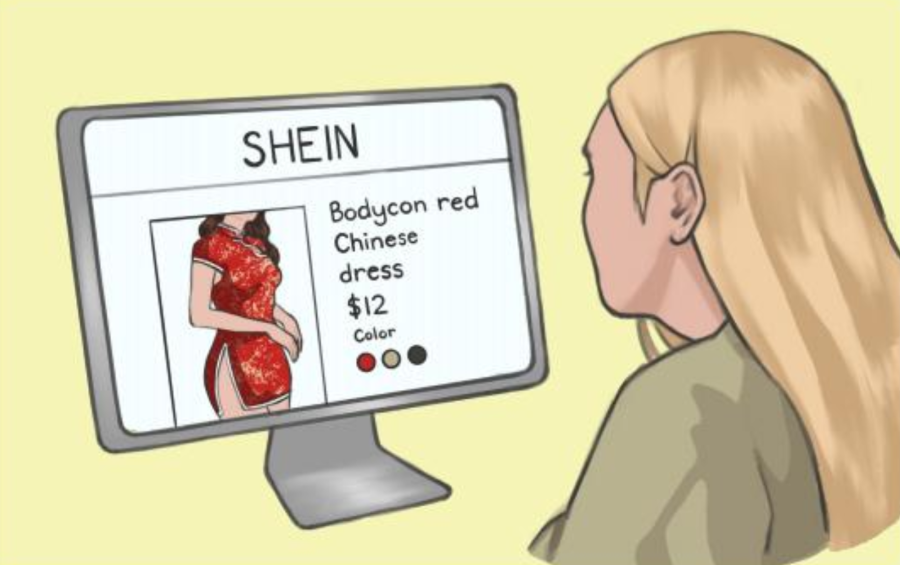As senior Hillary Cheung scrolls through some popular online stores, she sighs in disappointment as she comes across a dress of silk with a dragon motif in the same design as qipaos, also known as cheongsams, which are traditional Chinese dresses that are staples in both Chinese history and self-expression.
Arguments about what is and what isn’t considered cultural appropriation have caused controversy recently. It can be confusing to distinguish between cultural appropriation and appreciation, especially since Generation Z is one of the most politically progressive generations.
An example that has been trending on social media and clothing companies is using the prints from traditional Chinese dresses, called “qipao,” and turning them into trendy clothing pieces. Many people identify the fabric and design as belonging to an Asian culture, yet still choose to buy the product.
Cheung, the co-president of Paly’s Asian American Student Union, said it can be hard to determine one’s intentions if they are suspected of cultural appropriation.
“I’m speaking from a Chinese standpoint because I’m Chinese, but if there was a qipao design or something that a big company like Urban Outfitters was selling, I would definitely blame the company more than the buyer,” Cheung said. “I think buyers can be kind of ignorant, (but) maybe they see it in the shop and think, ‘Oh, that’s kind of cool,’ so in that way it’s understandable. But big sellers should know the origins and what it might mean to a culture.”
Clothing manufacturers and retailers, Cheung said, have a responsibility of ensuring their products are not offensive. But besides the ignorance of cultural appropriation, are there any long-lasting, harmful effects? How can it hurt the culture?
Junior Dora Pang said it can contribute to the deterioration of the culture’s true values and beliefs.
“A lot of the time on social media, I see people wearing qipaos, and it’s a big thing where they sexualize it,” Pang said. “I think that’s completely wrong. I see a lot of fast fashion companies take those qipao designs and make them completely wrong and sexualized and erasing them of their original culture.”
The qipao was declared to be the national dress in China in 1927, and was and still is used to express Chinese identity and culture. Now, they can be seen as prom dresses or trendy pieces of clothing for non-Chinese girls.
Another popular example of cultural appropriation is the use of the evil eye symbol, which originated from Turkey and Greece but spread to become sacred symbols in Buddhist, Islamic, and Hindu traditions. It is meant to bring spiritual protection by glaring at any negative people or energy surrounding you. This symbol has become increasingly popular on social media platforms and is most commonly hung on jewelry, which many people have started to wear without much prior knowledge of the symbol’s background.
Cultural appropriation is not only limited to Asian cultures, and is very widespread and common. It can and does happen to almost every culture. Some common ones include wearing Native headdresses as a costume, a non-Black individual getting their hair done in box braids or cornrows, and many more.
So how can we differentiate between cultural appropriation and cultural appreciation? How can we tell what is and isn’t ok?
“I think the main thing that draws the line between the two is — of course, it says in the name — appreciating the culture, so you kind of have done your research,” Cheung said. “If it’s something that’s significant to the culture, you know that maybe there’s a story that goes behind it or wearing it represents good fortune. You know the meaning of what you’re wearing and doing. In terms of appropriation, you might just be wearing or doing whatever the thing is as a trend or because it fits a certain aesthetic, so definitely understanding the background or the culture behind whatever you might be doing.”
With such diversity in the Bay Area, it can be difficult and confusing to understand if what you’re doing is culturally appropriate. All situations can vary, and you might have trouble differentiating what’s ok and what isn’t.
Cheung recommends taking a step back and reevaluating, and to ask yourself some questions.
“Ask yourself ‘why am I doing this?’ If you have a legitimate answer that’s great, but if it’s just ‘it looks cool,’ I think that’s a good indication of a red flag.”

